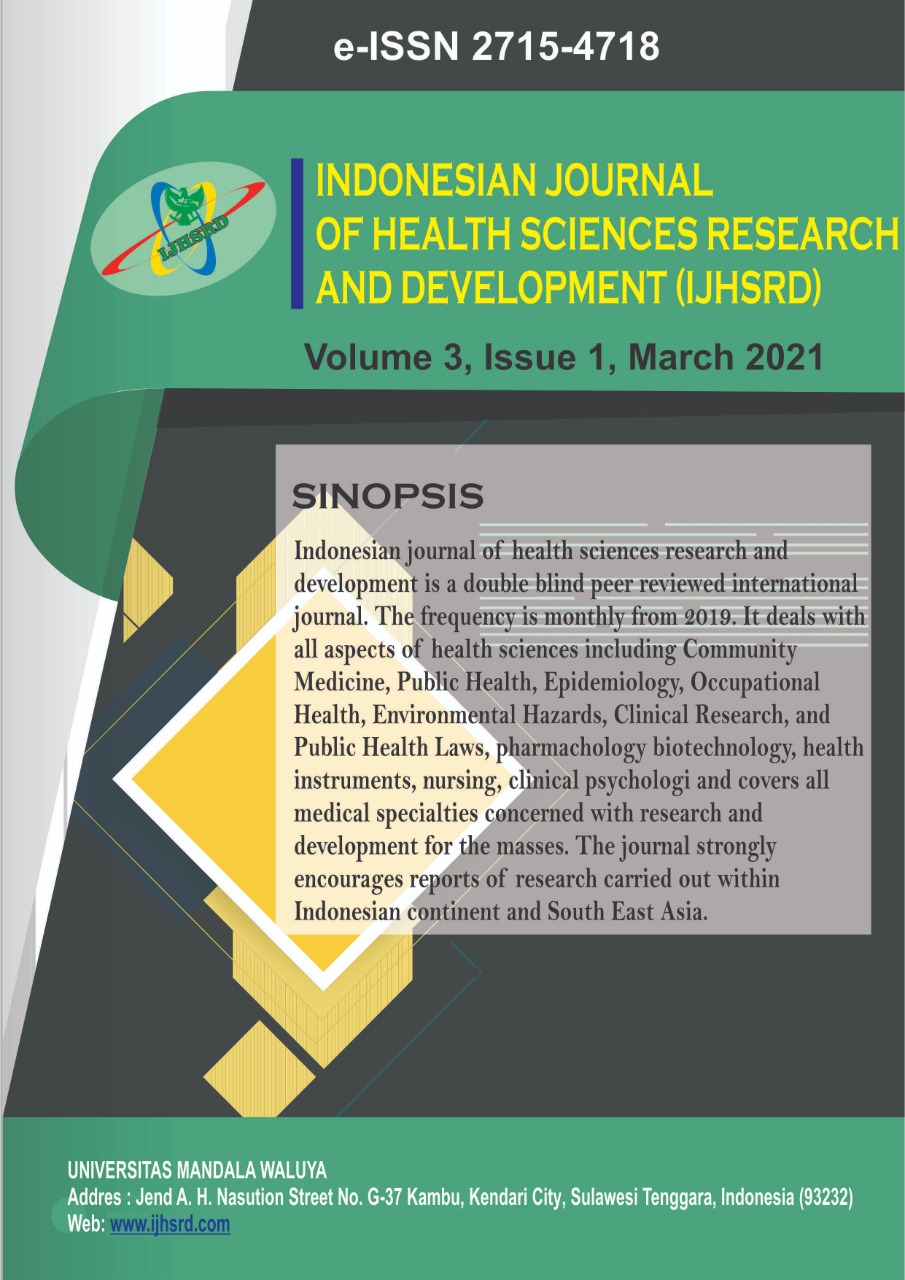Main Article Content
Abstract
Background: Diabetic ulcer is a micro vascular complication that can be experienced by all DM patients. This condition necessitates appropriate wound care management to prevent infection, reduce necrotic tissue, and enhance the wound healing process. This study aims to determine the effect of using Javanese tree bark scraping on the healing process of diabetic ulcers, namely changes in the size of diabetic ulcers.
Methods: This type of research is a Quasy Experiment with a Pre-test Post-test approach with control group. The populations in this study were all diabetic ulcer patients who came for wound care at Puskesmas Puuwatu totaling 16 respondents.
Result: The results of statistical tests show that the p-value for the intervention group is 0.317 and the control group is 1,000, which means that there is no difference in wound size before and after the intervention in the intervention group and the control group. In the Mann Whitney statistical test, it was found that the p-value in the intervention group was 0.189, which is greater than the value of ? = 0.05.
Conclusion: The dredging of the bark of the Java tree is not effective against changes in wound size in patients with diabetic ulcers.
Keywords
Article Details

This work is licensed under a Creative Commons Attribution-ShareAlike 4.0 International License.
References
- American Diabetes Association. Standards of medical care in diabetes. Diabetes Care (2018) Vol. 41 (1)
- Devi, Anakardian. 2017. Anatomy of Nursing Physiology and Biochemistry, Yogyakarta: New Library Press.
- Fitria, Eka, et al. 2017. Characteristics of Diabetic Ulcers in Diabetes Mellitus Patients at dr. Zainal Abidin and Meuraxa Hospital Banda Aceh. Health Research Bulletin, Vol. 45, No. 3, September 2017: 153 - 160.
- Yunus, Bahri. 2014. Factors Affecting the Length of Wound Healing in Diabetic Ulcer Patients at the Makassar ETN Center Nursing Home. http://repositori.uin-alauddin.ac.id/1333/1/Bahri%20Yunus.pdf
- Kshanti, Ida Ayu Made., et al. 2019. Guidelines for Independent Blood Glucose Monitoring. PB Permit. https://pbperkeni.or.id/wp-content/uploads/2019/12/Pedoman-Peng Manajemen-Glucose-Darah-Mandiri-2019.pdf
- Pradika, Jaka. 2015. The Effectiveness of Wound Cleansing Using Guava Leaves 20% with 15 Psi Pressure Showering Technique on the Healing of Diabetic Foot Ulcers at Kitamura Clinic, Pontianak. http://repository.umy.ac.id/bitstream/handle/123456789/8979/12.%20NASKAH%20].pdf?sequence=12&isAllowed=y
- Kristiyaningrum, et al. The effectiveness of using NaCl solution was compared with D40% on the healing process of DM ulcers. https://ejr.stikesmuhkudus.ac.id/index.php/jikk/article/viewFile/208/139. Retrieved August 13, 2019.
- Prawirohardjo, Erwin. Anti-Oxidant Activity Test and Toxicity Test of 70% Ethanol Extract and Water Extract of Java Wood Bark (LanneaCoromandelica).
- Bates Jensen Assesment Tools. http://fikes.ummgl.ac.id/downlot.php?file=BatesJensen%20Wound%20Assessment%20Tool.pdf.
